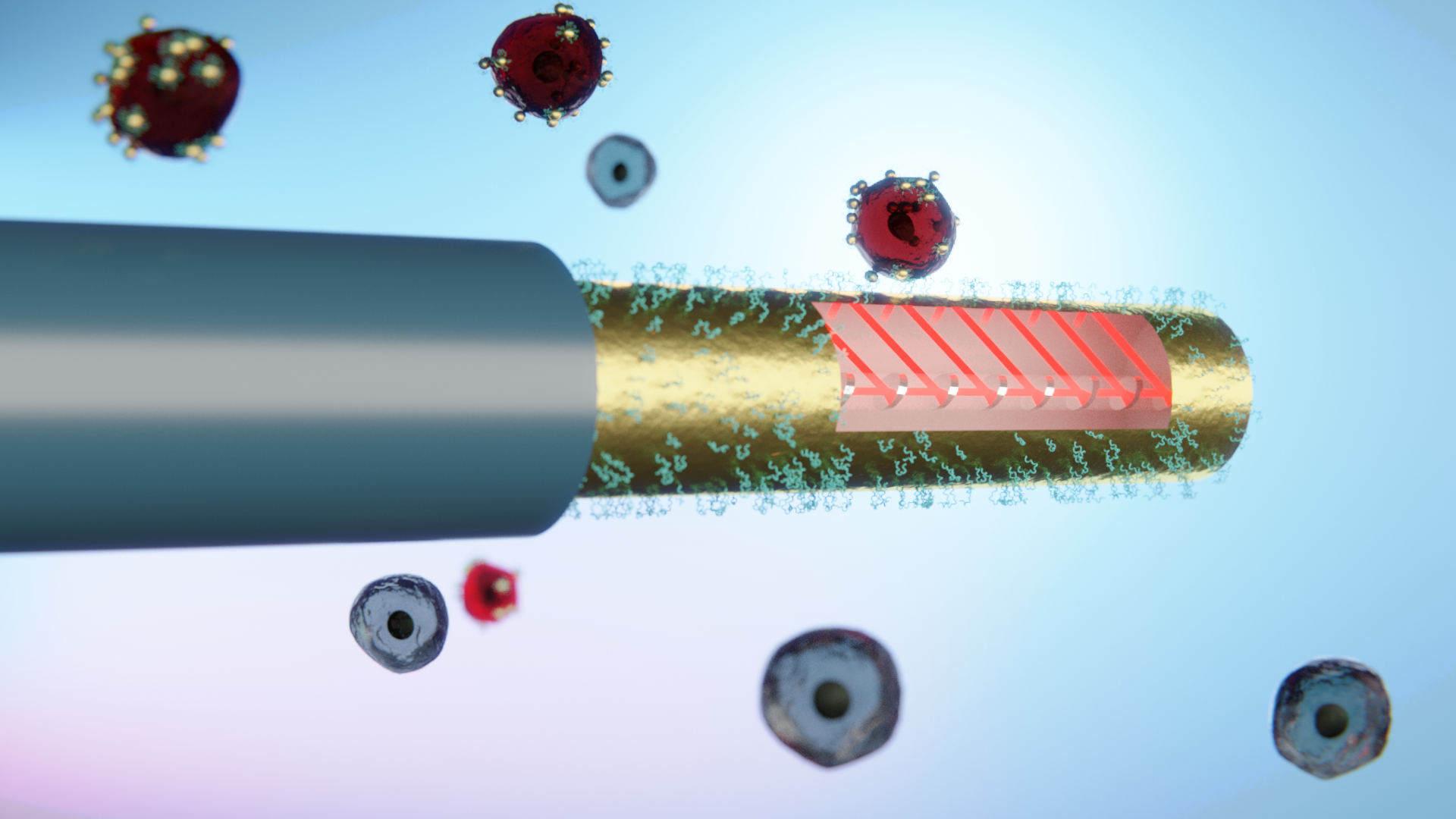






Temperature and strain sensing with fiber Bragg gratings is the most investigated research path in the scientific community.
Our specificities in this wide domain are the following:
- Study and development of high temperature sensing (up to 1000 °C and even beyond) with femtosecond-pulses laser-manufactured FBGs
- Study and development of polarization-based metrology of FBGs (Jones matrix analysis) for transverse strain and magnetic field sensing purposes
- Physical sensing (temperature, strain and humidity) with FBGs written in PMMA and CYTOP polymer optical fibres
- FBGs embedded in composite materials for temperature and internal strain distribution mapping
- Packaged FBGs for strain sensing in various structures like wind turbines and railway traffic monitoring


Our facilities enable the design and production of dedicated fiber gratings in multiple types of optical fibers: silica, polymer optical fiber (POF) among many others. The use of automated phase-mask technique allows the fast production of (T)FBGs (Noria from Northlab Photonics) while the femtosecond laser processing provides high tunability. It is therefore possible to manufacture different types of gratings, such as point-by-point FBGs or TFBGs, eccentric gratings, chirped gratings, etc.


The use of plasmonics coupled with TFBGs has already demonstrated impressive and fruitful results for the detection of analytes of interest (biomarkers) down to the picomolar level, including specific DNA or RNA sequences, proteins and cells. They share applications for biomedical diagnosis, environmental monitoring, cell culture quality control, etc. These features have led so far to embedded sensors inside endoscopes for tumor cell analysis in lung tissues. Recent achievements towards their use in situ have revealed their assets towards miniaturization of SPR probes.


For chemical sensing, we usually associate FBGs with a specific sensitive layer deposited on the fiber cross-section at the grating location. We have worked on the following configurations:
- Hydrogen sensors based on FBGs surrounded by a catalytic layer made of tungsten trioxide doped with platinum
- Infrared radiation sensors based on FBGs surrounded by copper oxide

In addition to characterize the grating spectral evolution in response to controlled temperature and axial strain changes, our team has specialized in the measurement of the polarization properties (Jones matrix eigenanalysis allowing to obtain the polarization dependent loss and differential group delay spectra) of the FBGs.
We have also research activities on the measurement of ionizing radiation effects on FBG spectra.
